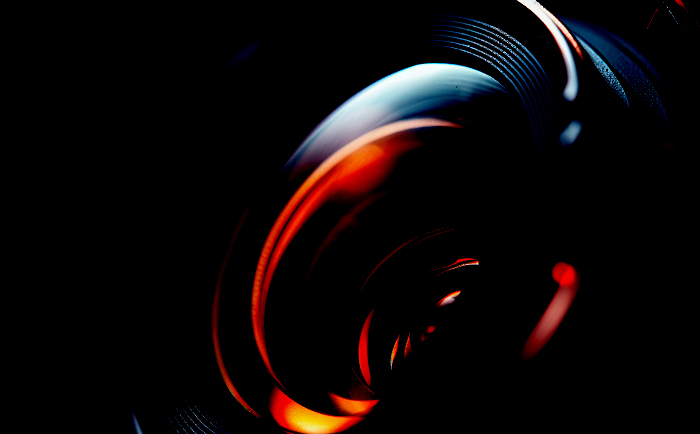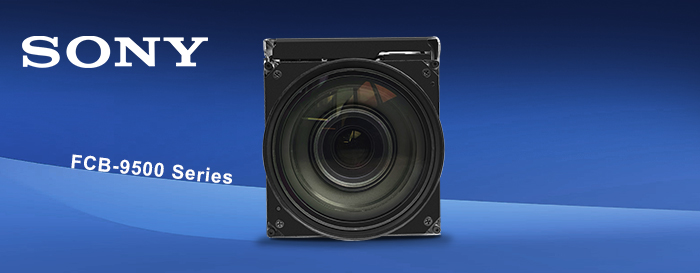From traditional infrared cameras to emerging black light cameras, and then to full-color night vision cameras, each technology has its unique principles and application scenarios. However, for many people, these terms can be confusing and it is difficult to distinguish the differences and advantages among them.
This article will delve into the working principles, features, and application scenarios of infrared, starlight, black light, and full-color night vision cameras, helping readers gain a comprehensive understanding of these technologies so as to make informed decisions when choosing suitable camera equipment.

I. Infrared Camera
1. Technical principle
Infrared cameras mainly emit infrared light through the built-in LED infrared lamp (visible red light with a wavelength of 850nm and invisible light with a wavelength of 940nm). After being reflected by the object, the infrared light is captured by the CMOS sensor, thereby achieving imaging. This imaging method belongs to active infrared imaging and requires the camera itself to emit infrared light.
2. Features
The night vision range is long, usually reaching 15 meters or more.
Infrared lamps are usually hard to be detected by people due to their strong concealment.
It has stable performance and is relatively energy-efficient.
The presented picture is in black and white, and the image restoration degree is relatively low.
3. Application scenarios
It is suitable for scenarios that have high requirements for night vision distance but not for color fidelity, such as warehouses and parking lots.
Ii. Starlight Camera
1. Technical principle
Starlight cameras rely on a combination of large-aperture lenses (such as F1.2-F1.0) and highly sensitive sensors (such as starlight-level CMOS) to output color images in extremely low illumination environments (below 0.01Lux). The core lies in increasing the amount of incoming light and enhancing the ability to capture weak light, enabling imaging without the need for additional light sources.
The SONY FCB-EV9520L and FCB-9500 series (FCB-EW9500H, FCB-EV9500M and FCB-EV9500L) camera modules can still reproduce and output true color images in a low light of 0.009Lx, and they belong to high-performance starlight night vision camera modules.

2. Features
It can maintain color imaging under an illuminance of 0.0001 to 0.1lux, with a more delicate picture, less noise and a brighter image.
According to the set darkness level, the infrared filter will be automatically removed (ICR On), increasing the infrared light sensitivity of the camera, switching to infrared night vision and presenting a black-and-white picture.
3. Application scenarios
It is suitable for indoor and outdoor scenarios with weak light sources, such as residential areas, warehouses, underground garages and other places that require concealed monitoring, as well as ecological protection areas where supplementary lighting is prohibited.
Iii. Black Light Camera
1. Technical principle
The black light camera uses two starlight-level image sensors. One collects image brightness information and object contours through infrared supplementary lighting, while the other collects color information. Then, the image information collected by the two sensors is fused through an image fusion algorithm to output an image that is both bright and colorful. This technology combines the advantages of infrared imaging and color imaging, solving the problems of traditional cameras losing color information due to infrared supplementary lighting and starlight cameras having excessive noise in the picture due to insufficient ambient light at night.
2. Features
It can still maintain color images in a low-light environment of 0.0005Lx. The video images at night are brighter, cleaner and the colors are more realistic.
Equipped with warm light and infrared light, it forms all-weather monitoring.
Solve the problem of traditional cameras losing color information due to infrared supplementary lighting, as well as the difficulty of starlight cameras causing excessive noise in the picture due to insufficient ambient light at night.
The SONY FCB-EV9520L can achieve a minimum illuminance of 0.00008Lx. For this reason, it has been given the reputation of “black light camera” by many users.
3. Application scenarios
The environmental requirements for full-color imaging of black light cameras in low-light scenarios have been met, which can significantly enhance the effect of night monitoring and is widely used in security fields such as urban public security, traffic monitoring, and community security. However, it should be noted that black light cameras cannot form clear images in a completely dark environment, and their prices are also relatively high.
Four. Night vision full-color camera
1. Technical principle
Night vision full-color cameras usually require white light to fill the light to achieve color imaging in a completely dark environment. The principle is relatively simple, mainly providing sufficient light through a fill light to enable the camera to capture color images.

2. Features
24-hour all-weather color monitoring, with clear images and rich colors.
Soft light is used for supplementary lighting, which is gentle and not dazzling.
It can capture full-color dynamic images in real time even in extremely low or no light conditions.
3. Application scenarios
It is suitable for scenarios with extremely high requirements for night color monitoring and the need for round-the-clock monitoring, such as roads, warehouses, underground parking lots, bars, parks, etc.
Summary
Infrared cameras, starlight cameras, black light cameras and full-color night vision cameras each have their own characteristics and applicable scenarios. Infrared cameras are suitable for completely dark environments, but the picture is in black and white. The starlight camera can output color images in low-light conditions, but infrared supplementary lighting is required when there is no light at all. Black light cameras can provide full-color images in low light conditions, but they are more expensive and perform best in non-completely dark environments. Night vision full-color cameras rely on white light to achieve color imaging in a completely dark environment. When making a choice, users need to make a comprehensive consideration based on their specific needs and the characteristics of the scene.
 Sony FCB camera block
Sony FCB camera block